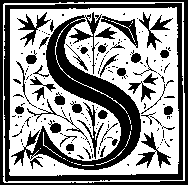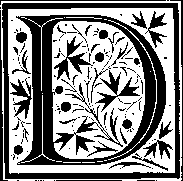Moons
Thomas Mallon
(Pantheon)

Finally, by page 75, Mallon somehow manages to make his characters come to life:
- Cynthia May, widowed in the Civil War, a great lady with figures --- hired on as a "computer" (nice touch there) by the Observatory;
- Hugh Allison, mystic genius, also on the payroll at the Observatory, who has plans to communicate by light with other peoples in other worlds in other times, and who, improbably, falls in love with Cynthia; and
- Sen. Roscoe Conkling, the one who made it possible for Hayes to steal the election from Tilden and who, improbably, also falls in love with Cynthia.
Two Moons is proto-Doctorow, meaning that it's a mix of fictional and real characters at a certain point in history when the world is in flux. The high point of Mallon's art is the weaving of the world of late 19th Century Washington into the novel form. Along the way, we get the discovery of the two moons of Mars, the start of the completion of the Washington Monument, the turmoil over Reconstruction, the passing of D'Arrest's comet, a New York Custom's House scandal, the malarial fevers that abound in Foggy Bottom, life in your typical 1877 boarding house, the birth of the women's sufferage movement, further search for other planets, the very first sound recordings --- and how to get laid in your typical 19th century tryst. These fold easily into the plot, and if you can make it this far, you'll be hooked.
Adding to it is the sprightly dialogue of our Scarlett O'Hara-like character --- Mrs. May --- along with the mad meanderings of the mystic visionary Hugh, and the arrogant speeches and improbable love of a lusty senator. The death scenes are a knock-out, and the descriptions of Washington DC --- then as now the home of poverty, ugliness, stupid ambition, and lousy people with too much hunger --- makes for somewhat interesting reading. Especially if you are, as we are, a sucker for the world of science from a hundred years ago.
Shooter
Roger McDonald
(Penguin)
 yms Covington leaves his "jolly stepmother" and "rowdy brothers" to sail with an evangelical sailor --- ultimately ending up working for Charles Darwin on the HMS Beagle. He --- now "middle-aged and curmudgeonly" --- settles in Australia, where he bursts his appendix while waiting around to receive a copy of you-know-what as soon as it comes hot off the press.
yms Covington leaves his "jolly stepmother" and "rowdy brothers" to sail with an evangelical sailor --- ultimately ending up working for Charles Darwin on the HMS Beagle. He --- now "middle-aged and curmudgeonly" --- settles in Australia, where he bursts his appendix while waiting around to receive a copy of you-know-what as soon as it comes hot off the press.We would never be adverse to a journey on the Beagle with Darwin --- much less Syms Covington. But the author planted several mines in the waterways of the first chapter, such as this description of Syms' pappy:
The steamy-breathed old man had bristly eyebrows flying back over his forehead, and prominent front teeth showing yellow and flat when he drew his lips back. Standing in his blood-brown boots he rocked back and forth as if hammered to the ground and twanging slightly with the force of his opinions.
It put us much in mind of that old one about the bald-headed guy who let his eyebrows grow long and brushed them back over his head. Added to this is the vision of someone being hammered into the ground while they're busily twanging slightly with his opinions.
I figure if someone is going to go to the trouble to put together a whole book, and if he wants us to soldier on to page 365 --- he should be very careful with whatever he gives us in the way of introductions. Twanging, steamy-breathed old guys just don't make it.
It might behoove McDonald to spend some time with those authors who know how to get the ball rolling in the first few pages without "blood-brown boots" --- authors like Hemingway, Doestevsky, Gide, Crane, Hardy, Fitzgerald, Nabokov.
For a second opinion, see The New York Times. They claim that Mr. Darwin's Shooter --- what a lurid title! --- is "notable." And coming from The New York Times, you know what that means.
Total pages read: 40
Yoga
Dilgo Khyentse Rinpoche
(Snow Lion)
 ilgo Khyentse Rinpoche looks like a friendly old Santa Claus dressed up robes with bell and hat --- minus the beard. The key to his practice, he tells us, is twofold. First, find a master of Buddhism. Second, understand and use the chant,
ilgo Khyentse Rinpoche looks like a friendly old Santa Claus dressed up robes with bell and hat --- minus the beard. The key to his practice, he tells us, is twofold. First, find a master of Buddhism. Second, understand and use the chant,Om Ah Hum Vajra Guru Padma Siddhi Hum.
By repeating this prayer, one is calling on the master, for the twelve syllables represent "the essence of the twelve branches of Lord Buddha's teachings."
In addition, one should use visualizations. For instance, the "red syllable AH" flows from
the throat center of the guru stredam out boundless rays of brilliant ruby-colored red light. These are absorbed into a syllable AH visualized at our own throat center, and they completely fill our whole body.
It can get a bit complicated, as in the following inspired but somewhat confusing passage:
Great bliss is generated through the practice of tummo. In this practice, the practitioner visualizes below the navel center, a point resembling the right stroke of the Tibetan letter A. From it rises fire, swift and strong, which ascends through the channels to a white syllable HAM visualized at the top of the head. Touched by the fire, the HAM begins to drip a precious nectar, which fills the practitioner's body with an experience of Great Bliss, unstained by ordinary emotions.
Wags would want to make something of the journey up through the tummo by a ham, dripping nectar, but certainly, this is no weirder (and certain less grisly) than the Western practice of drinking the blood and eating the flesh of the Christian god --- a holy act that a few might define as being close to what they called "The Custom of the Sea," (the killing and eating of one to sustain the others).
Guru Yoga is brief, less than a hundred pages, and is probably meant for those somewhat more accustomed to the theory of Tibetan Buddhism.